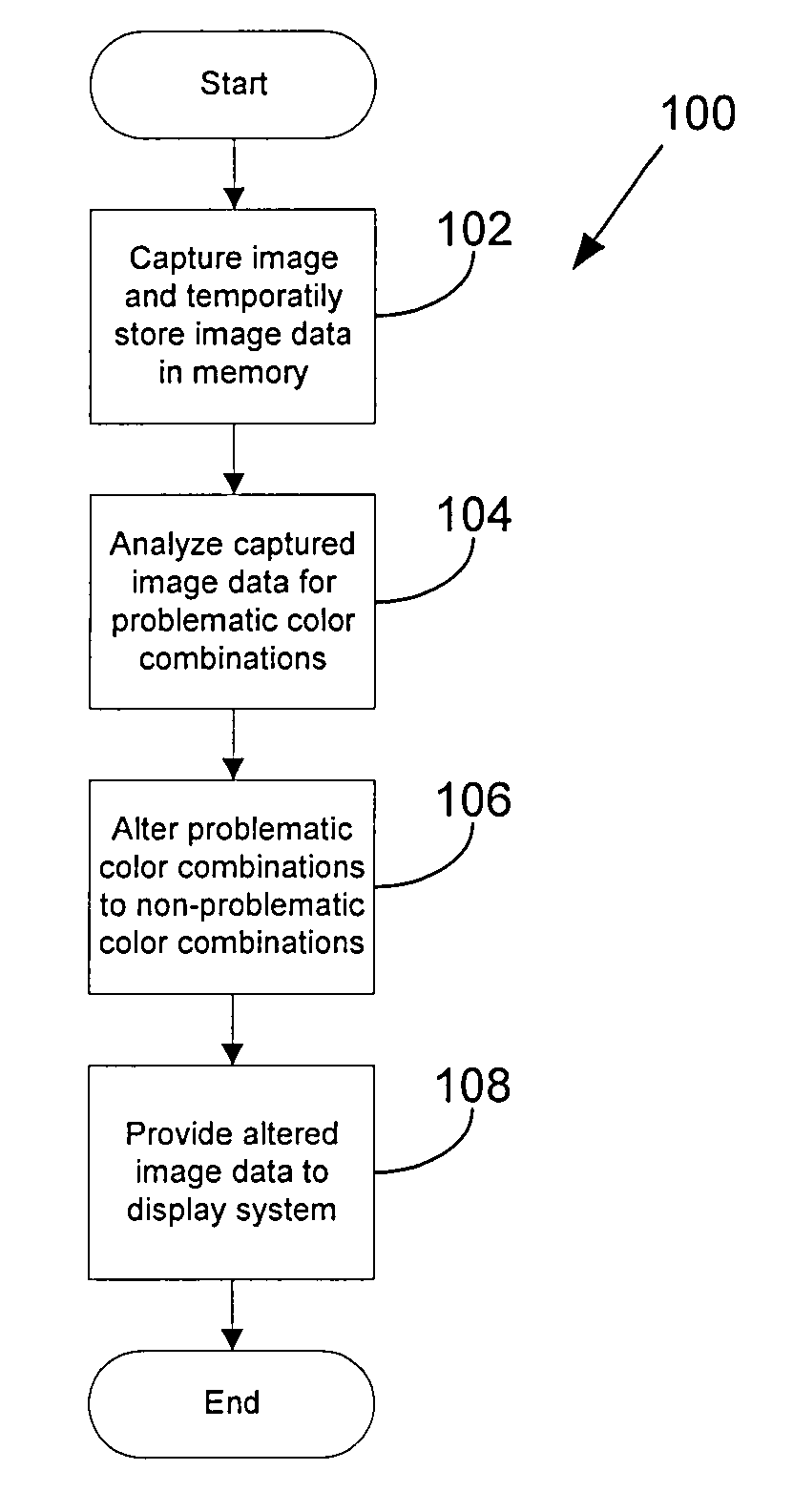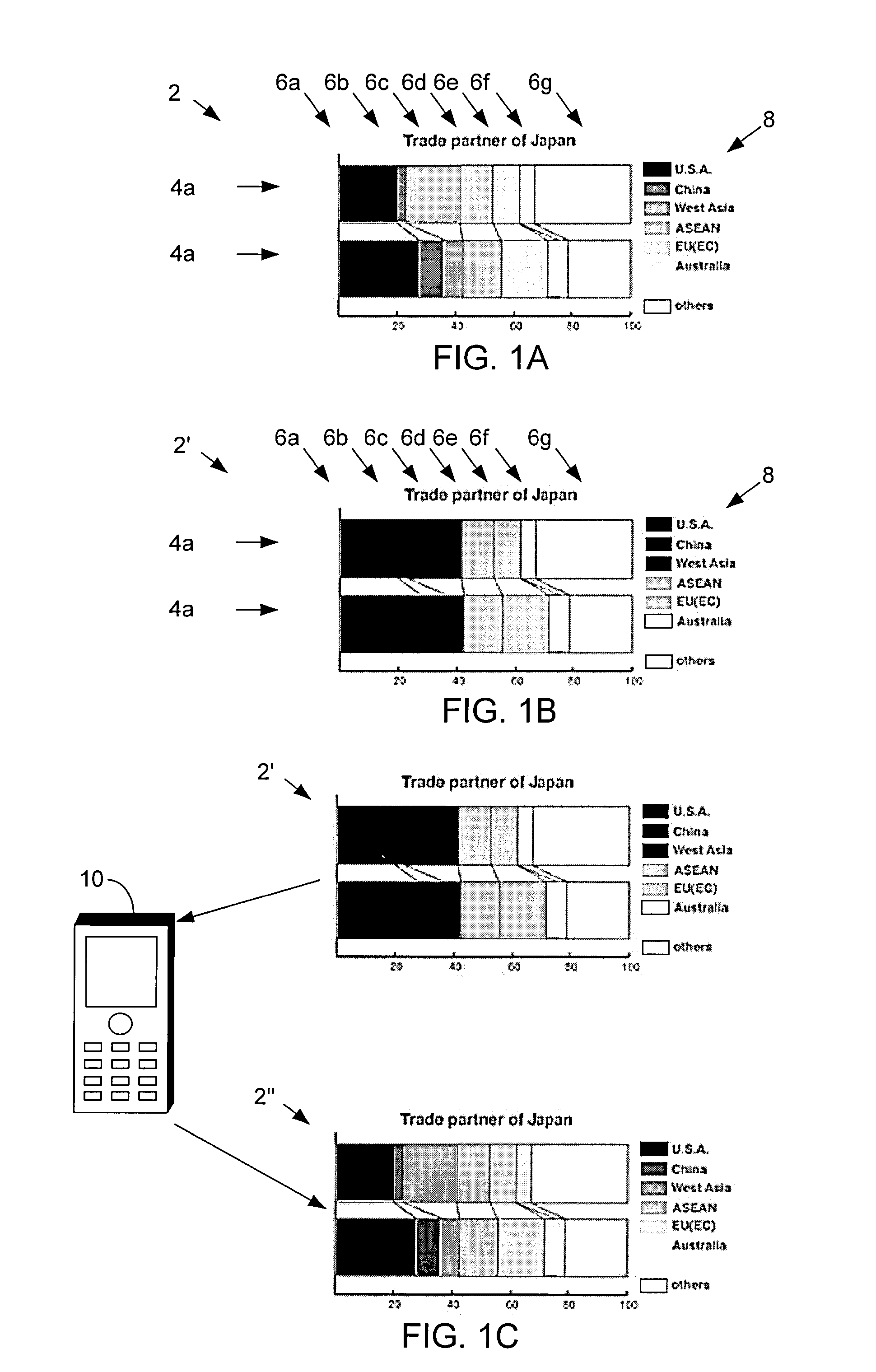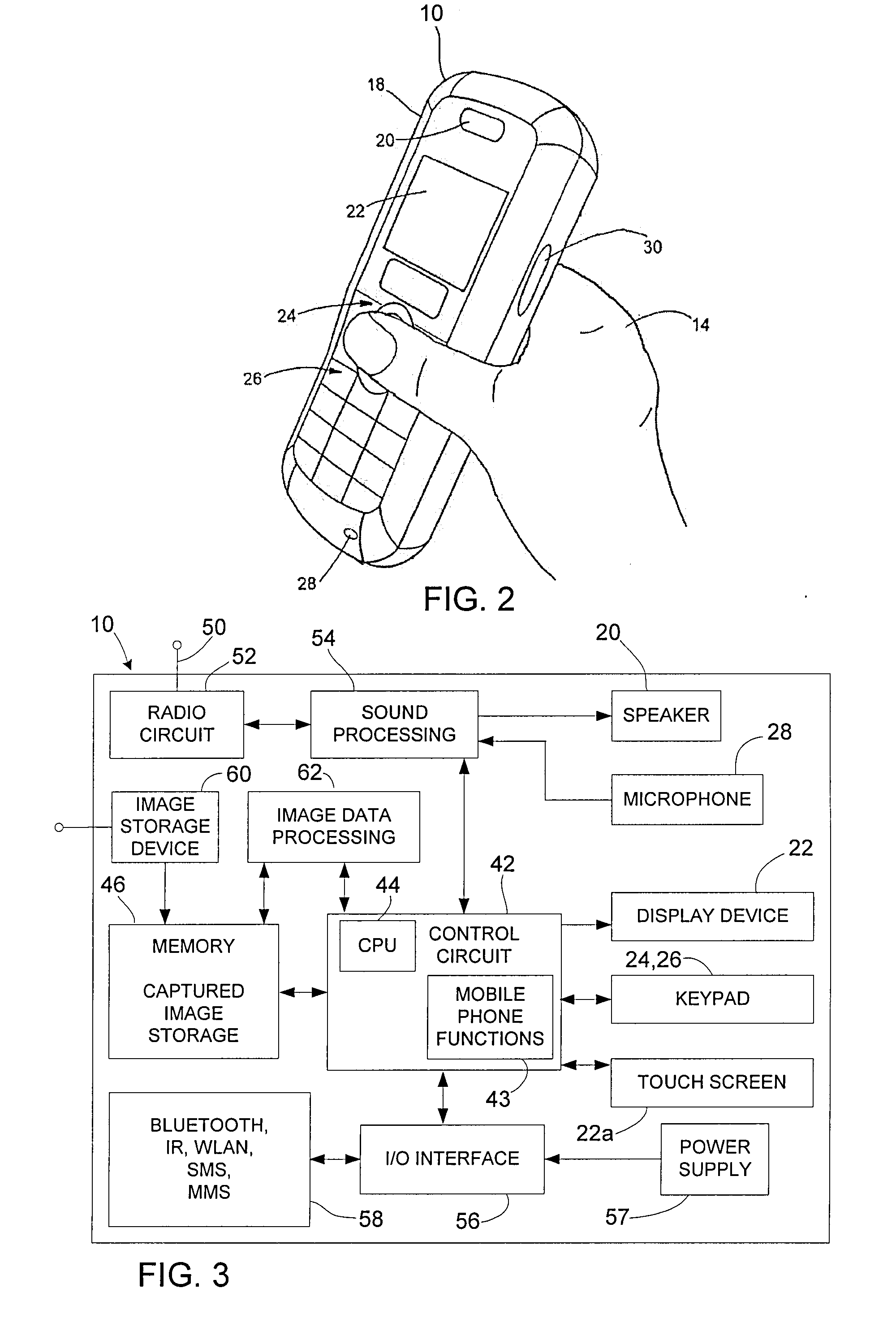Reading glasses for the color blind
a technology for color blind people and reading glasses, applied in the field of color blind glasses, can solve the problems of color blindness, color vision deficiency, inability to perceive differences between some or all colors that other people can distinguish, and difficulty in distinguishing between these colors, so as to achieve the effect of easy distinguishing
- Summary
- Abstract
- Description
- Claims
- Application Information
AI Technical Summary
Benefits of technology
Problems solved by technology
Method used
Image
Examples
Embodiment Construction
[0046]The present invention will now be described with reference to the drawings, wherein like reference numerals are used to refer to like elements throughout.
[0047]The term “electronic equipment” includes portable radio communication equipment. The term “portable radio communication equipment,” which herein after is referred to as a “mobile radio terminal,”“mobile phone,”“mobile device,” or “mobile terminal” and the like, includes all equipment such as mobile telephones, pagers, communicators, i.e., electronic organizers, personal digital assistants (PDAs), smartphones, portable communication apparatus or the like. The term “electronic equipment” also may include portable digital music and / or video devices, e.g., iPod devices, mp3 players, portable game systems, etc.
[0048]In the present application, the invention is described primarily in the context of a mobile phone. However, it will be appreciated that the invention is not intended to be limited to a mobile phone and can be any...
PUM
 Login to View More
Login to View More Abstract
Description
Claims
Application Information
 Login to View More
Login to View More - R&D
- Intellectual Property
- Life Sciences
- Materials
- Tech Scout
- Unparalleled Data Quality
- Higher Quality Content
- 60% Fewer Hallucinations
Browse by: Latest US Patents, China's latest patents, Technical Efficacy Thesaurus, Application Domain, Technology Topic, Popular Technical Reports.
© 2025 PatSnap. All rights reserved.Legal|Privacy policy|Modern Slavery Act Transparency Statement|Sitemap|About US| Contact US: help@patsnap.com



